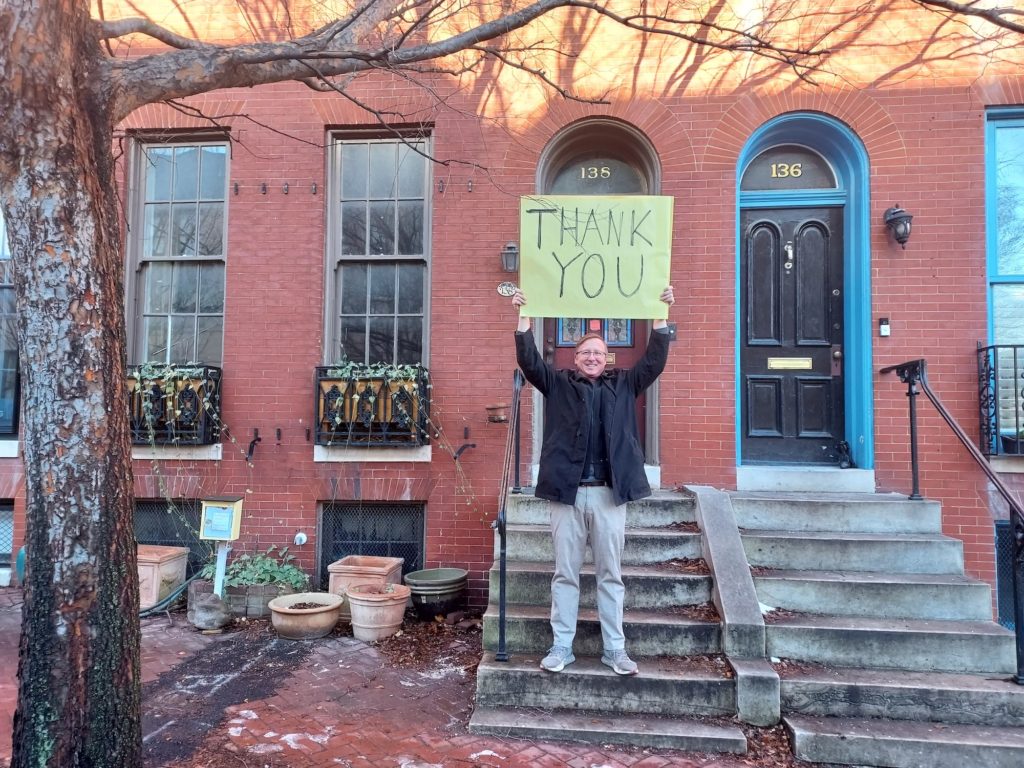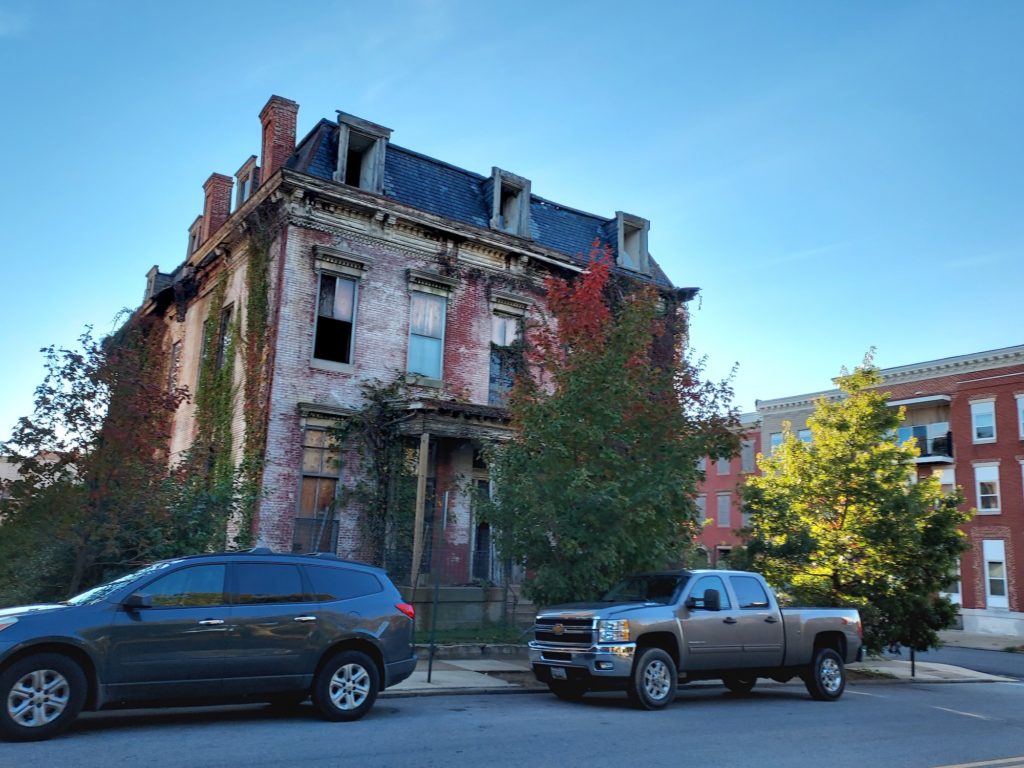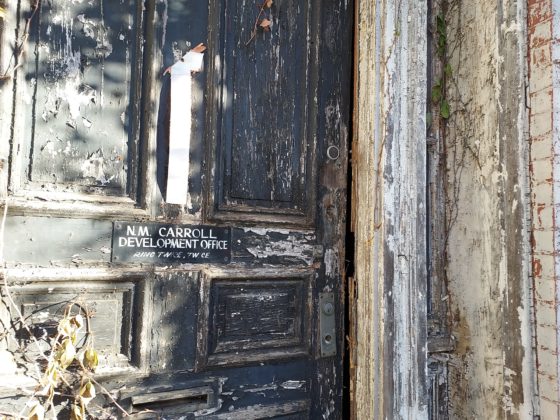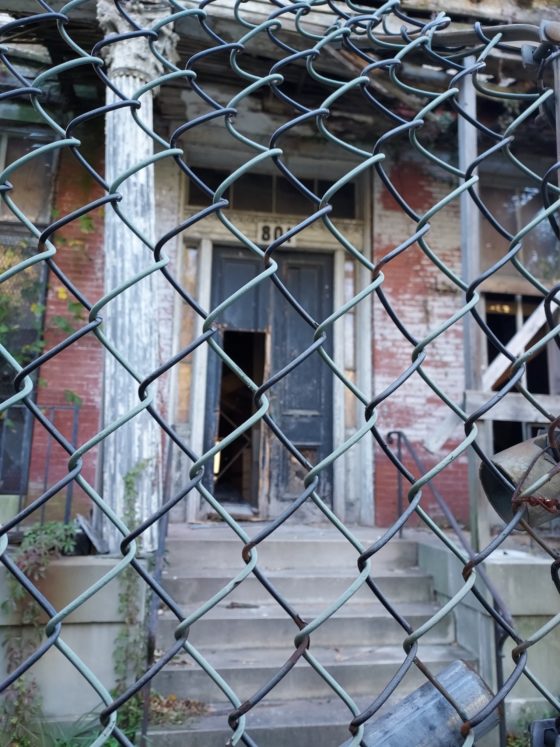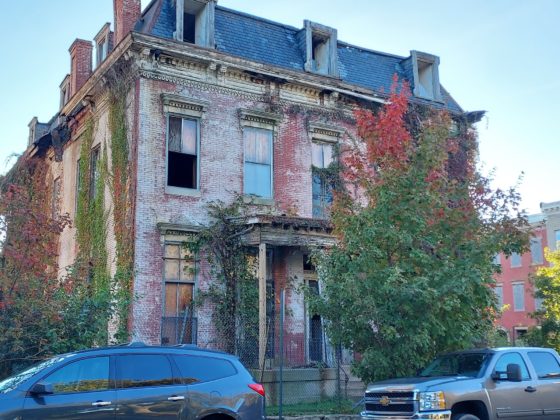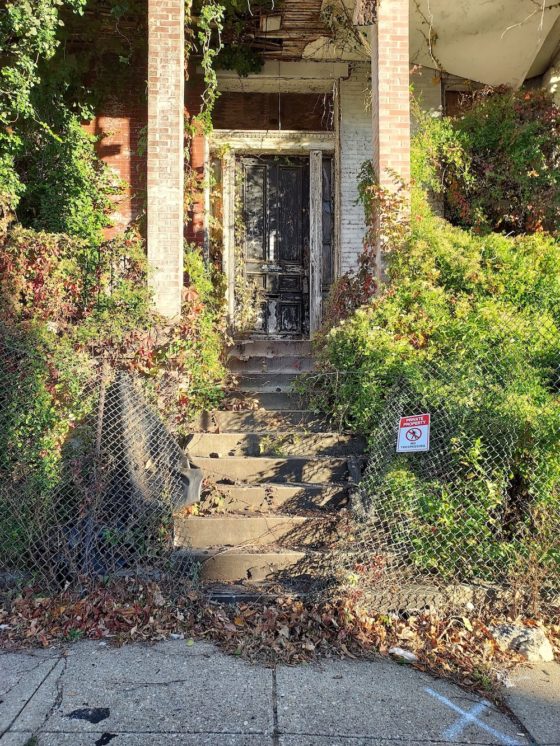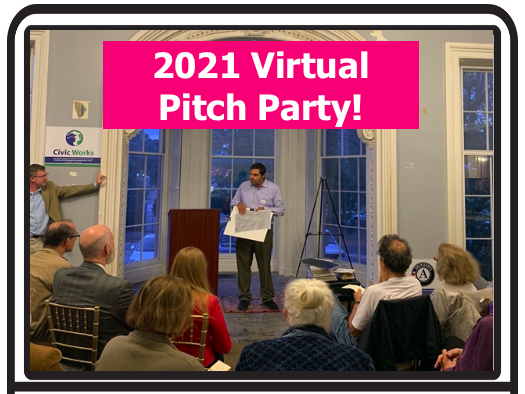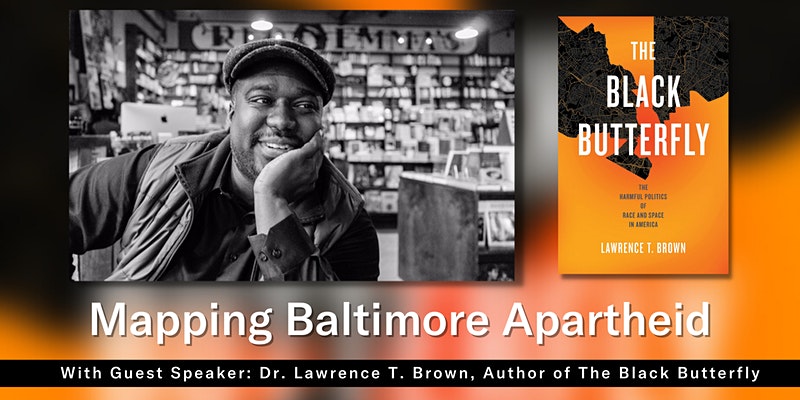Abell Foundation *
Abrams, Lissa *
Adair, James
Adams, Joe *
Adams, Patricia
Adams, Rachel *
Adams, Virginia *
Adashek, Aimee *
Adrian, Jean Marie *
Agee, Anne
AGM Financial Services*
Akchin, Don*
Alexander, Judith
Alicia and Joe Corson
Allegreti-Freeman, Lucille*
Allen, Carol*
Allen, Deborah
Allison Weiss and Frederick Sisk
Alt, Patricia
Amador, Catherine*
Amy Bonitz and Addison Palmer*
Amy Davis and Robert Cronan
Amy Macht and George Grose
Anbinder, Robert
Anderson, Jane
Anderson, Pat*
Andrea and Roy Struble
Andreone, Tom
Andrew and Sharon Nickol*
Andrews, Anna
Andrews, Donna
Andrews, Patricia *
Angela and Robert Pond
Ann and David Saunders
Anne and Hugh Coyle
Anne and Richard Swingle*
Anne and Tony South
Anne Raines and Eric Leland
Anozie, Lynda*
Anson, Melanie
Aquino, Karla
Aracil, Bonnie*
Architects, Penza Bailey
Arlene Forastiere and Gary Goldstein*
Armand and Kathleen Pulcinella*
Armbruster, Janet
Armold, Judith
Arnold, Richard
Arnold-Garza, Sara*
Arthur Gleckler and Kristine Kelly*
Ashby, Fay*
Ashcraft, Mary Ann
Audrey and John Rogers*
Ault, Donald*
Auni and Tim Gelles
Azola and Associates*
Azola, Anthony
Azola, Martin
Bahr, Raymond
Bailey, Lewis*
Bailliere, Anne*
Baisden, Ruth *
Baker, Natalie*
Baker, Susan*
Ball, Madelyn
Ballou, Ken
Baltimore Community Foundation
Baltimore National Heritage Area
Barbara and Edward Panowitz
Barbara and Gerard St. Ours*
Barbara and Glenn Davis
Barbara and John McDaniel
Barbara and Patrick Francis
Barbara and Sandy Weeks*
Barbara Christen and David Luljak
Barbara Engelke and Richard White
Bari, Lisa*
Barnes, Christine*
Baroch, Dee*
Barrett, Michael*
Barroll, Page
Barry and Barbara Blumberg*
Barry, William*
Barsda, Jo Ann
Barton, Cary
Basch, Paul
Bath, Susan*
Baynes, Kevin
Beck, Gary
Becker, Maureen
Belfoure, Charles
Bell, Lenora*
Bendann, Lance
Bengali, Kathleen
Bennish, Michael
Bennish, Michael
Bennish, Michael
Beretta, Dante
Berglund, Richard*
Berman, Deborah*
Berman, Meg
Bernardi, Lynn*
Bernie Silverman and John Hartman*
Bernstein, Neil
Bershad, Jacqueline*
Betancourt, Isabel*
Beth and Chuck Bullamore
Beth Leaman and Dino Talamona
Bierman, Babette
Bill Gilmore and Ted Frankel*
Bill Marker and Nan Tuckett
Bird, Betty*
Birkel, Bonnie*
Bissett, Wesley*
Black, Catharine
Blom, Kate*
Blonsley, Linda
Bob and Lynn Pellaton
Bobart, David
Bodian, Brenda*
Bohan, Deborah
Bomberger, Karen G
Bongiovani, Maryanne*
Borak, Mark*
Born, Carl*
Bosserman, Laura*
Bowen, Sarah
Bowers, Gary*
Bowers, Lee
Bowes, Arlene*
Bowie, Cindy*
Bowman Brown, Carolyn
Boyle, Ellsworth
Bradley, Bonnie*
Brady, Michael
Braman, Mary*
Brant, Joseph
Braun, Alexis
Brauneis, Robert
Braverman, Mara
Braymer, Nancy
brennan + company architects
Brennan, Alison
Brennan, Rob
Breslaw, Elaine
Brewer, Corey*
Brieger, William*
Briggs, Jo
Briggs, Patricia
Brigitte and Nicholas Fessenden*
Brinza, Patrick*
Brobst, Bonnie
Brockman, Suzanne
Broida, Michael*
Brooks, Susan*
Brower, Cynthia R*
Brown, Anna
Brown, Charlotte B*
Brown, David
Brown, Frona*
Brown, James
Brown, Jonathan*
Brown, Paul*
Brown, Rebecca*
Brown, Suzanne*
Brownell, Charles
Bruce and Suzanne Manger
Bruce Bauman and Elizabeth Halloran*
Buchbinder, Sharon*
Bucher, Ward*
Buckley, Marcia*
Buckley, Sean
Bunch, Robert
Burger, Jim*
Burke, Robert*
Burnett, Walter*
Buswell, Susan R.*
Butchers Hill Association*
Butler, Elise
Byrnes, John
Byrnes, Joseph
Byrnes, Patricia*
Cadigan, John
Cahill, Kathleen*
Callahan, Charles*
Campbell, Bettye
Campbell, Janet*
Cane, David
Caplan, Nancy
Caplan, Richard
Cardin, Deborah
Carel Hedlund and Len Fass
Carl and Carol Oppenheim*
Carl Roth and Karen Birdsong
Carl, Susan*
Carla Rosenthal and Alan Schwartz
Carlat, Louis*
Carol and Peter Holland
Carol and Tom Mariani
Carol Gilbert and Matt Arozian
Caroline and Peter Wayner
Carolyn and John Boitnott
Carroll, Jack*
Cassandra and Robert Black
Castronovo, Ingrid
Catherine Evans and David Goldstein
Catherine Heuer and Jeffrey Huber
Cathy Dryden and Dean Uhler
Catler, Susan*
Cavey, Rebecca
Celsy, Mylo
Chaitkin, Stuart*
Chalfant, Fred*
Chambliss, Deborah*
Chan, Thomas*
Chapin, David*
Charlene and Jay Simonds
Charles A. and Lois H. Miller Foundation
Charles and Diana Scott*
Charles and Lydia Duff*
Charles and Mary Meyer
Charles and Meredeth Wells*
Charles and Shirley Smith*
Charles and Susan Minor*
Charlotte and Charles Trainor *
Charrier, Jacqueline *
Chason, Patricia
Chenoweth, Sarah
Chenoweth, Sarah*
Chong, Sue Lin
Chris and Cynthia Whitaker
Chris Taylor and Thom Shipley*
Chrismer, Jim*
Christhilf, P. Raab
Christine and Christopher Myers*
Christoph, Erica*
Christopher Schisler and Robert Stimmel
Churchill, Robin*
Cindy and Tom Kelly
Citerone, Fay
Claiborne, Jonathan*
Clapp, Ann
Clark, Meredith*
Clark, Michele*
Clarke, Emily*
Clegg, Rae Ellen
Clemins, Karen
Cleva, Elise
Clifford, Brett
Clifton, Penny
Close, Craig
Clouse, Thomas*
Cogswell, Edwin
Cohen, Alan*
Cohen, Judy
Cohen, Pamela
Cole, Richard*
Coleman, Larry*
Colletta, Andrew
Collins, Holiday*
Compton, Matthew*
Conkwright, Terry
Connolly, Marion*
Connolly, Pamela
Connor, Joseph*
Cookingham, Linda
Cooper, Mary
Coreil-Allen, Graham
Corell, Calvin*
Cormeny, Nancy*
Costello, Robyn
Courtenay and Maurice Hoag
Cox, Carol*
Craig, Jill*
Craig, Sally
Cramer, Nancy*
Cramer, Paul
Craun, Margaret
Creamer, Gordon
Creamer, Kate
Creamer, Susan
Crew, Rebecca*
Cripps, Lynn
Cronin, Carol
Cross and Brenda O’Donovan
Cross, Charlotte
Cross-Barnet, Michael*
Crymes, Cathy
Culler, Karen*
Cullman, Nikken*
Cummings, Barbara*
Curtis, Barbara
D’Adamo, Margaret
Daddazio, Carol*
Dahl, Ann*
Daley, Margaret*
Dalsimer, Linda*
Daly, Vincent
Damie and Diane Stillman
Dan and Rene Pallace*
Danesie, Stephanie*
Daniel B. and Gina D. Hirschhorn
Danz Jr, John*
Darnell, Michael
Darryl and Mary Jurkiewicz
David and Bonnie Allan
David and Elizabeth Hancock
David and Jan Chapin
David and Jo Gadsby
David and Marilyn Warshawsky*
David and Mindy Hayes
David and Nancy Blois*
David Ditman and Denise Valancius-Ditman
Davis Nichols, Debbie
Davis, Jennifer*
Davis, Maureen*
Deardorff, Virginia
Deb and Jeff Chamblee
Deborah and Bernard Rabin
Deborah and Donald Scott
Deborah and Howard Berman
Deborah Diehl and Jonathan Claiborne
DeGroff, Marion*
Deibel, Carol
DeMarco, Sally*
Dembski, Mike
Demirjian, John
Demma, Rachel
Dendrinos, John
Denholm, Patricia
Denton, Heidi
Denzler, James
DeRosa, Susan
Derricks, Valerie
DeStefano, Jessie*
Deters, Philip*
Devlin, Thomas*
Di Prospero, Adriana
Diamond, Margaret*
Diana and Donald D’Agati
Diana and Larry Schramm
Dianne and Charles Feldman
Dibos, Paul*
Dickersin, Kay*
DiDonato, John*
Diebold, Julie*
Diffenderffer, R.B.*
DiLaura, Alice
Disharoon, Richard*
Disney, Elizabeth
Disney, Elizabeth*
Dissinger, Maureen
Diuguid, Lewis
Dobbs, Judy
Dobbyn, Angela*
Donald and Joanna Kann
Donohue, Carolyn
Donovan, Courtney*
Donovan, Sharon*
Dopkin, Michael
Dordai, Donna
Dorn, Patrick
Dorsey, Karin
Dorsey, Myrtle
Dorsey-Shaner, Laura*
Doug and Joan Campbell
Doug Kelso and Claudia Sennett*
Dougherty, Julie
Douglas, Todd
Dowling, Michael*
Downing, Shawn
Doyle, Judy
Dr. and Mrs. Allan Jensen
Dr. and Mrs. William Kreul
Dr. Thomas Smith and Dr. Joann Bodurtha*
Drake, Andrea*
Drexler, Sarah
Dru Schmidt-Perkins and Louis Perkins
Druckman, Dolph
Dube, Paula
Duncan and Maxine Hodge*
Dunsworth, Leslie*
Dusman, Dale
Duvall, Peter
Dyer, Dolly*
Dyer, Dolores*
E Mitchell, Kristen*
Eason, Nancy
Eberhart, Linda
Eckenstein, Dominik
Ed and Aviva Hord*
Ed and Christine Crawford
Ed and Jo Orser
Ed and Sue Dickey*
Eddy, John
Edenwald
Edward and Sallie Papenfuse
Eines, Ellie*
Eli Pousson and Dinah Winnick
Elizabeth and Gordon Bryson
Elizabeth Cusick and Geoffrey Himes*
Elliott, Clare
Elliott, Patricia
Engel, Jennifer
Eppler, Eric*
Eric and Esther Frey*
Escobosa, JoAnn
Espaillat, Nicole*
Ettinger, Susan
Everest, Robert*
Ewertz, Marjorie*
Exelon Foundation
Fava, Thomas
Feige, Donald
Feigelman, Susan
Felsten, Janet*
Fenton, Matthew*
Fernandes, Paula*
Festa, Jeannette*
Fickensher , Lisa*
Fifield, Rebecca*
Fink, Renee*
Finnerty, Carolyn
Fisher, Joan
Fishman, Sara
Fisk, Betsy
Fleishman, Ruth
Flood, Michael*
Florence and Francis Falatko*
Flottemesch, Barbara*
Flynn, Janice*
Foertsch, David
Fogelson, Laurence*
Forgach, John
Forster, Marjorie*
Foster, Linda
Fox, Jaclyn
Francis and Carolyn Knott*
Francis, Barbara
Fransen, Beverly
Franyo, Gigi*
Fraquelli, Dorothy*
Fred Shoken and Donna Beth Joy Schapiro
Frederick, Pamela
Freed, James*
Freedlander, Jonathan
French, Judith*
French, Julie*
Frenkil, Steven
Frideberg, Charlton*
Froide, Amy
Frost, Elisa
Fruman, Arnold
Fry, Jim
Fuhrmann, Sue
Fung, Phyllis*
Funkhouser, Rick*
Gaegler, Robert*
Galbreath, John*
Gall, Elizabeth
Galleher, Earl*
Galvez, Ginger
Gamper, Thomas
Gardiner-Ferretto, Mary Faith*
Garman, Allison*
Gary and Judith Floam
Gary Sachau and William Robertson
Gatchell, Richard*
Gavin, Barbara
Geist, John
Genovese, Lenora
George Lavdas and Jeremy Walston
Gernert, James
Gerr, Melissa*
Gessesse, Heywan
Gewanter, Ira
Gilbert, Teresa*
Giles, Ellen*
Gillett, John
Gillette, Susan*
Gilman-Forlini, Jackson
Gilpin, Richard
Gittings, Neil
Giulliano, Michael
Glassman, Molly
Glaze, Paige
GLB Concrete Construction*
Gleason, Bryan
Gleason, David*
Glenn and Susan Carey*
Glenn, Susan*
Goble Jr, James
Goerling, Rita
Gold, Amy*
Gold, Joe
Goldberg, Judith*
Goldman, Alice*
Goldstein, Shelley*
Gonzalez, A. J.
Gooch, Cheryl Renee*
Goodrich, Carolyn
Goody, Brigid
Gordon, Ann Clary*
Gordon, Lauren*
Gorman, Clare
Gossett, Anne*
Gottert, Leslie
Gould, Amy*
Gournay, Isabelle*
Graham, Julia*
Graves, Carole
Gray, Jefferson
Gray, la Verne
Green, Krista*
Green, Mary Jo*
Green, Virginia*
Greene, Jimell
Greene, Shelley
Greenstein, Ira
Greg Pease and Kelly Baumgartner*
Gregory Baranoski and Lucio Gama*
Grenzer, Jeanne
Griffin, Joyce
Guarda, Angela*
Guyer, Bernard
Fava, Thomas
Feige, Donald
Feigelman, Susan
Felsten, Janet*
Fenton, Matthew*
Fernandes, Paula*
Festa, Jeannette*
Fickensher, Lisa*
Fifield, Rebecca*
Fink, Renee*
Finnerty, Carolyn
Fisher, Joan
Fishman, Sara
Fisk, Betsy
Fleishman, Ruth
Flood, Michael*
Florence and Francis Falatko*
Flottemesch, Barbara*
Flynn, Janice*
Foertsch, David
Fogelson, Laurence*
Forgach, John
Forster, Marjorie*
Foster, Linda
Fox, Jaclyn
Francis and Carolyn Knott*
Francis, Barbara
Fransen, Beverly
Franyo, Gigi*
Fraquelli, Dorothy*
Fred Shoken and Donna Beth Joy Schapiro
Frederick, Pamela
Freed, James*
Freedlander, Jonathan
French, Judith*
French, Julie*
Frenkil, Steven
Frideberg, Charlton*
Froide, Amy
Frost, Elisa
Fruman, Arnold
Fry, Jim
Fuhrmann, Sue
Fung, Phyllis*
Funkhouser, Rick*
Gaegler, Robert*
Galbreath, John*
Gall, Elizabeth
Galleher, Earl*
Galvez, Ginger
Gamper, Thomas
Gardiner-Ferretto, Mary Faith*
Garman, Allison*
Gary and Judith Floam
Gary Sachau and William Robertson
Gatchell, Richard*
Gavin, Barbara
Geist, John
Genovese, Lenora
George Lavdas and Jeremy Walston
Gernert, James
Gerr, Melissa*
Gessesse, Heywan
Gewanter, Ira
Gilbert, Teresa*
Giles, Ellen*
Gillett, John
Gillette, Susan*
Gilman-Forlini, Jackson
Gilpin, Richard
Gittings, Neil
Giulliano, Michael
Glassman, Molly
Glaze, Paige
GLB Concrete Construction *
Gleason, Bryan
Gleason, David*
Glenn and Susan Carey*
Glenn, Susan*
Goble Jr, James
Goerling, Rita
Gold, Amy*
Gold, Joe
Goldberg, Judith*
Goldman, Alice*
Goldstein, Shelley*
Gonzalez, A. J.
Gooch, Cheryl Renee*
Goodrich, Carolyn
Goody, Brigid
Gordon, Ann Clary*
Gordon, Lauren*
Gorman, Clare
Gossett, Anne*
Gottert, Leslie
Gould, Amy*
Gournay, Isabelle*
Graham, Julia*
Graves, Carole
Gray, Jefferson
Gray, la Verne
Green, Krista*
Green, Mary Jo*
Green, Virginia*
Greene, Jimell
Greene, Shelley
Greenstein, Ira
Greg Pease and Kelly Baumgartner*
Gregory Baranoski and Lucio Gama*
Grenzer, Jeanne
Griffin, Joyce
Guarda, Angela*
Gunnar Fisher and Diana Curran
Guyer, Bernard
Hagan, Sheila
Hahn, Susan*
Haislip, Carol
Haley and Joel Kantziper
Hall, Carol*
Hallock, Frieda*
Haltiwanger, David
Haltzel, Jodi*
Hamaker, Jonathan
Hamilton, Susan
Hammid, Julia
Hancock, David*
Handley, Jacquelyn*
Hankey, Jean*
Hanly, Katherine
Hanson, Alan
Hardiman, Joseph*
Hardy, Bill*
Harenberg, Darlene*
Harman, Susan
Harold and Mary Graul
Harris, Nancy
Harrison, Katherine*
Harrison, Reed
Harrison, Sarah
Hartka, Janet
Hartka, M.J.
Hartke, Carol
Hassel, Lauren*
Hastings, Robert*
Hawes, Nina
Hawthorne, Patricia
Hayden, Paul
Hayes, Daniel*
Hearn, Katie*
Hedlund, Carel*
Hedlund, Linda*
Held, Kirsten
Helena Wright and Robert Vogel
Helinski, Maureen
Hellman, Elissa*
Hellwig, Louise*
Hemler, Unknown*
Heninger, Polly*
Henricksen Thompson, Susan
Henrietta and Christopher Keller
Henry and Sarah Lord
Henry Dugan and Caroline Griffin
Henry Kay and Beth Harber
Herbert, Randy*
Hessler, Charles
Hettchen, William
Hicks, Tanya*
Higgins, Sheri
Hilgenberg, John*
Hill, Martha*
Hillman, Richard*
Himmelrich Associates
Hinderberger, Peter
Hirtle, Peter*
Hobbs, Rodney
Hodges, Karen
Hoff, Robert
Hoffman, Steven
Hogan, Brenna*
Holdridge, Barbara
Hollie, Donna T.*
Hollifield, William
Holmes, Philip
HomeFinishers Handyman Services
Hope, Jenny
Hopper, Ethna
Horvath, Ann
Hossfeld, Jeffrey*
Houson, Judy
Howard, Daniel
Howell Baum and Madelyn Siegel*
Howell, Ann
Howison, Clarissa*
Howze, Warren*
Hubble, Paula*
Huber-Plano, Sharon*
Hughes, Elizabeth
Hull, Doris
Humphreys, Lesley
Hunter, David*
Hurt, Christine*
Hutchins, Stuart
Hutson, Harry
Isennock, Patricia
Israel, Jean
Jack and Byrd Wood
Jack and Cynthia Burkert
Jack, Eric*
Jackel, Stephanie
Jacklynn and John Krick*
Jackson, Joe*
Jacobson, Joan
Jacobson, Kurt
Jadie and Gregory Mayes
James and Deborah Pickett*
James and Shona Adleberg*
Jan Mooney and Kurt Schiller*
Jana Carey and Ben Yuhas
Jane and George Keller
Jane Polanka and Jim Peiffer*
Janet Marie Smith and Barton Harvey*
Janice and Richard Cox
Jarosinski, Kathleen*
Jason Shellenhamer and Lisa Kraus
Jeff and Brandy Tomhave
Jeff and Judith Gardner*
Jeff Murray and Vigdis Jacobsen
Jeffrey and Laura Penza
Jenkins, Carroll
Jenny and Steve Carson
Jensen, Robert
Jesse and Deborah Hellman
Jill and Miles Goodman
Jillson, Cynthia*
Jo and Bruce Van Wely
Joanne and James Baker*
Joe and Peggy Cronyn*
Johanson, Amy*
John and Donna Folkemer
John and Elizabeth Howard*
John and Joyce Maclay
John and Patricia Leith-Tetrault*
John and Sheila Scollan
John and Sue Talbott*
John Connolly and Abbott Bolte
John Kyle and Peter Satten*
John Massad and Pamela Tuma
John O’Hara and Carol Baumerich*
John Sondheim and Emily R. Greenberg
Johns, Sherri
Johns, Stephanie*
Johnson, Judith*
Jonas, Alex*
Jones, Carmen
Jones, Joan
Jones, Ken
Joseph and Margaret Schaefer
Joseph Schamp and Carol Newill
Josselyn, Michele*
Joust, Patrick
Joyce and Frank Margolis
Joyce and Stephen Oliner*
Judges, William*
Judith and Jeffrey Kremen*
Julie Canard and Jerry Murphy
Julie Marx and Jeff Thompson*
Julie Thorne and Mike Rynd
Jurkiewicz, Darryl*
Kafer, Madison
Kahan, Ann H.*
Kangas, Linda*
Kann, Donald*
Kaplan, Pamela
Karrs, Robert
Karzai, Helmand*
Kasoff, Donna
Kathleen and Michael Kotarba
Kathy Sabatier and Rick Funkhouser
Katsereles, Bill
Katz, Gregory*
Katz, Hannah*
Katzenberg, Roger & Liz*
Kauffman, Karen*
Kaufman , Rebekah
Kayne, Ilene*
Keating, Margie*
Keck, Maureen*
Keech, Sharon
Keehn, Robert
Kell, Amanda*
Keller Uy, Joyce*
Keller, Jane*
Kellermann, Mark
Kelley, Alice*
Kelly, Lee
Kelly, Miriam Winder*
Kelly-Washington, Lauren
Ken and Maureen Reightler
Kennedy, Nancy*
Kerr, Harriet*
Kesecker, Lisa
Kienlen, Joan
Kimbrel, Barbara
Kimel, Aileen*
King, Gregory
King, Nicole*
King, Raymond
Kingsley, Christopher*
Kinniff, Jenny*
Kirby, Patty*
Kirk, Raissa*
Klair, Dianne*
Klinefelter, Standard
Knepper, Randolph
Knight, Melvin
Knowles, Anne*
Knuppel, Ilka*
Kochanski, David
Koerber, Bryan
Kopp, Harry*
Koronowski, Edward*
Krafchik, Melissa
Kreeger, Joan
Krentz, Diane
Kretkowski, Christine*
Krogh, Marla*
Kuhl, Timothy*
Kunik, Joeanne*
Kuntz, Scott
Kurtz, Ralph *
Kyler, Panelpha*
LaCombe, Philip
LaFave, Taylor
LaHatte, Bernard
Lamdin, David*
Landa, Edward*
LaRoche, David
Lasker, April*
Laura and Barrett Freedlander
Laurence Fogelson and Eileen Manchester
Lawrence, Joan
Layman, Eleanor*
Leahy, James
Leahy, James*
Lee and Kathy Watkins
Lee and Tina Sheller
Lee, Bethany
Leimbach, Bill*
Leimbach, Telfair
Leimkuhler, Urban
Lennon, Mary Beth*
Leslie and Bruce Greenwald
Lett, Ronald
Levering, Phoebe*
Levin Lapides, Suzanne*
Levin, Michael*
Levy, Harris
Lewand, Beth
Lewand, Robert
Lewis, Edward
Lewis, Eileen
Lewis, Stefanie*
Libby, Jean*
Liberto, Samuel*
Liebel, Tom*
Liebmann, George*
Lilly, Anne*
Lilly, Linda
Liming, Christine
Lin, Julianna*
Linda and Gary Heubeck*
Linda and John Butt
Linda and Roger Lark*
Lindberg, Iris
Lipinski, Marian
Lisa and Duncan Keir
Lisa Morgan and Timothy Goldsmith
Littlefield, Patricia
Lockwood, Ronald
Lois and Mike Mannes*
Long, Beverly*
Long, Margaret*
Louis and Mary Triandafilou
Lovett, Rachel
Low, Bernadette
Lubell, Paul
Lucas, Frank
Lucksted, Alicia
Lucy and Paul McKean
Lupien, Miriam
Lutz, Sharon
Lynn and Phil Rauch*
Lynn, Jane*
Lyons, Linda*
Macht, Carol*
MacMillan, Jane*
Madigan, Timothy*
Maillar, Ellen*
Majerik, Anne
Makarovich, Michal*
Marcia and Jim Tingey
Marconi, Gerard
Margaret and Charles Reid
Margaret Meyer and Arthur Boyd
Maria Wawer and Ron Gray
Marian and Jim Colimore*
Mark and Joanne Pollak
Mark and Susan Counselman
Marsalek, Kenneth
Marsh, Jeanne*
Marvin and Sara Bigham
Mary Ellen and Adrian Bergin
Mary Mashburn and Steve St. Angelo
Mary Page Michel and Mike Morrill
Maryland Center for History and Culture
Maryland Department of Housing and Community Development
Maryland Historical Trust
Maslan, Sylvia
Mason, Bruce
Massuda, Cindy*
Matusky, Patricia
Mayes, Jadie*
Mazo, Hannah
McCart, Maureen
McCausey, Bonnie
McClain, Carolyn
McConnell, Jane*
McConnell, Laura
McCormick, Kevin*
McDaniel, John*
McDaniel, Sean *
McDonough, Claire*
McGlinchey, Larry
McGrath, Michael
McGraw, Paul
McKay, Ken*
McKenna, Bernard
McKibbin, David*
McKinley, Sharon*
McLain Wiesand*
McLaughlin, Ellen*
McLaurin, Claire*
Meeks, Wallis*
Meier, Harriet*
Meisol, Patricia
Melamed, Julia
Meringolo, Denise
Merrill Alterman and Ed Rosenfeld
Merrow, S.B.
Messick, Richard*
Metz, Patricia
Meyer, Mary*
Michael and Denise Halstad
Michael Booth and Kristine Smets
Michael J. Walkley, PA*
Michael Stein and Ilene Harris*
Michael, Kurt
Michelle Scoville and Michael Burke*
Miller, Bonnie
Miller, Douglas
Miller, George*
Miller, John*
Miller, Kendrick
Miller, Linda*
Miller, Rick
Miller, Wesson
Milne, Gail
Milukas, Susan*
Mint, Priscilla
Misiak, Jodie
Mitchel and Penelope Wald
Mitchell, David*
Mitchell, Kathleen*
Mohammad Mahmoudi
Mongelluzzo, Mark*
Montefiore, Jean*
Moorman, Lu
Morehead, Richard
Moreland, Lisa
Morley, Karen
Morrell, Carin
Morrell, Shirley
Morrill, Paul
Morrison, Ellen
Morton, Sandra
Moscareillo, Susan
Moser, Elizabeth
Mount Washington Garden Club
Mr. and Mrs. O. James Talbott, II*
Mullen, Sarah
Mullins, Lisa*
Mullins, Tom*
Mundroff, Lili
Munro, Douglas
Murdoch, Mara*
Murray, Barkley
Myers III, Charles
Myers, Brett
Myers, Michael
Myron Oppenheimer and Maxine Cohen
Nancy and Fred Duggan
Nancy and Joseph Stanley
Nancy and Mark Supik
Nancy and Richard Bradley
Nancy King and Karen Robb
Naos, Barbara*
Natalie and Charles Ellis
Nathan Dennies and Alyssa Brown
Neil and Sayra Meyerhoff*
Nelson, Travers*
Nesbitt, John
Nevaldine, Linda
Newton-Treadway, Rik*
Nichols, Deborah Davis
Nicole Diehlmann and P.J. Duhig*
Nilson, Elizabeth
Noller, Jackie*
Noreen and Randy Herbert
Novak, Pat*
Noyes, Harvey*
Nyweide, David*
Obaza, Jane Kentch*
Obradovic, Linda*
Odette, Ann*
O’Donnell, Maureen
Ohler, Randy*
Oloizia, Richard
Olson, Valerie
Opecko, Michael
O’Rourke, Eileen
Orr, Robert
Ortiz, Timothy
O’Shea, Dennis
Osondu, Chimezie
Otto, Terry*
Owens, Spencer*
Pack, Stacey*
Packard, David*
Palkovitz, Jeffrey
Palmer, Carol*
Palmer, Michael*
Pamela Mahoney and Mark Lidinsky
Panopoulos, Phyllis
Papagni, John
Parker, Penny
Parker, Sylvia Lee*
Parnes, Stephen*
Parshall, Anne
Parsons, Anne
Parsons, Sarah
Pat and Bob Orr
Pat and Nick Manos*
Pat and Robert Welch
Patricia and Aaron Parker*
Patrick McMahon and Meg Stoltzfus
Paul and Mary Anne Kowzan
Paul and Mary Kay LePage *
Paul Martin and Susanne Morsberger*
Pearce, Matthew
Pearce, Sharon Lina
Peck, Leigh*
Pelton, Nancy*
Penelope and Garrett Power
Penny George and Mark Trunk
Peno, Steven*
Perl, Susan
Perzinski, Curtis
Peter Morrill and Melissa Archer
Peterson, Christine
Petrie, Susan*
Pfingsten, Chris*
Phibbs, Judith
Philip and Nancy Kennedy
Phillips, Craig*
Phillips, Debbie
Phyllis Fung and John Mariani
Pine, Penelope*
Pirotte, Katharine
Plaine, Mary
Plumer, Mary*
Plummer, Leslie
PNC Bank
Poirier, Myrna
Politakis, Nick*
Pollak, Joanne*
Pomykala, Anne*
Pontius, Geraldine*
Populoh, Ursula*
Porter, Beth*
Porter, Gloria
Porter, Wayne*
Powell, Andy
Prior, Christina
Prouser, Traci*
Pumphrey, Jack*
Pyun, Seongjoon*
Questers Baltimore Chapter*
Quint, Peter
Rabben, Linda*
Raben, Marian*
Rachek, Patricia*
Ralph Brown and Elaine Kasmer
Ramberg, Walter Dodd*
Randall, Cathy
Ranon, Anath
Ransom, Gene
Rasinen, Miia
Ray Hofmann and Tori Simms
Raymond and Catherine Sachs
Raymond, Margaret
Reardon, Mary
Reazer, Brandy*
Rebecca and Darren Crew
Rebecca Brown and Tom Scuderi
Redden, Gretchen*
Redmond, Thomas*
Reed, Dana*
Reid LaClair and Rebecca Hanson
Reis, Richard*
Reynolds, Benjamin
Reznick, Seema*
Richard and Beverly Gutmann*
Richard and Mariam Haar
Richardson, Mary Lee
Richardson, Suzanne
Richmond, Barry
Rickert, Craig*
Riemer, Justin
Rife, Penny*
Riley, Sarah A.*
Ritterhoff, Claire
Ritterhoff, Judy
Robert and Caroline Lyke*
Robert and Claire Gisriel
Robert and Kate Goldstein
Robert and Shifra Weinberg
Robert and Susan Blum*
Robert and Susan Wurtz
Robert and Virginia Hanson
Robert and Wendy Davis*
Robert Burke and Helen Blumberg
Roberta Strickler and David Meyers*
Robertson, Carolyn
Robin Minor and Russell Atscano
Robinson, Jennifer*
Rock, Michael
Romaine and Frank Somerville
Ronald and Pat Pilling
Ronald Huffman and M.J. Tooey
Rose Bramble and Susan Dobry
Rosemarie and Evans Paull*
Rosen, Bev
Rosenbaum, Leslie
Rosenfeld, Gayle*
Rosenhauer, Joan*
Rosholt, Jack
Rosner, Naomi
Ross, John
Rossman, Claire
Roush, Carol*
Rovito, Annette
Rubin, Dorothy
Rucker, Susan
Rudow, Stephen
Ruffner, Jennifer
Russell, David
Ruttley, James*
Ruzicka, Joseph
Ruzicka, Joseph*
Rybczynski, Robert
Sabas, Jo Anne
Sack, George
Sagner, Stephen*
Sallese, Carl
Sally and Mike Johnston
Sally Otto and Anthony Warchal
Sandra and Robert Schmidt
Sanford, Edyth*
Santa-Maria, Serafina
Sara and Ben Langmead*
Sattler, Stephen
Saunders, Deborah
Savage, Pat
Scally, Ruth*
Scepaniak, Jacquelyn
Scepaniak, Michael
Schamp, Joseph*
Scharmen, Fred
Scharper, Mia*
Schaumburg, Wayne
Scheffel, Ursula
Schepis, Laura*
Scher, Dena
Scherlis, Barbara*
Schisler, Christopher*
Schiszik, Lauren*
Schlegel, Brad
Schlegel, William*
Schlenoff, Geri*
Schmitz, Gordon
Schreiber, Brendan
Schreiberg, Sharon
Schreter, Carol
Schroedl, Evelyn*
Schultz, Kathleen
Schulz, Peter
Schwab, Emelie*
Schwark, Eleanor
Schwartz, Cathy*
Scott, Sally
Scott, Sean
Seivert, Thomas
Sexton, Carlton*
Seyler, Allison
Shade, Neil
Shaffer, Mark
Shapleigh, Shari*
Sharkey, Doris
Sharon and Bill Reuter
Shaun Carrick and Ronald Griffin
Sheehe, Jack
Sheila and Howard Maleson*
Sheila and Thomas Peter*
Shepard, Ruthann
Sheppard, Mark
Sherry and Vince DeFrancisci
Shetler, James
Shimshak, Mark*
Shivers, Lottie*
Shockley, Jay*
Shopes, Linda
Shprentz, Deborah*
Siegel, Brian
Siemon, John*
Simonds, Jay*
Sipple, M Noel
Sizer, Michael*
Sklenka, Sara
Smith, Abbe
Smith, Ann
Smith, April
Smith, Bruce
Smith, Charlie
Smith, Claire*
Smith, Emily*
Smith, Gordon*
Smith, Kathy*
Smith, Linda*
Snellings, Albert
Solomon, Gary
Sorenson, Peter*
South, Anne & Tony*
Southway Builders*
Spamer, Helen*
Spicer, Joaneath
Spratley, Jeanette*
Spratt, Jennifer E.*
Sprecher, Milford
Stahl, Ruth
Stallings, Jo Ann *
Stang, Michael
Stanley and Dorah Brager
Stanley and Freda Thawley
Steele, John
Stein, Dana *
Stein, Sue
Stein, Virginia
Steinhorn, David
Stenchly, Mary-Louise
Stephen and Mary Sprecher*
Steve and Mary Beth Halpern
Steve and Monty Howard
Steve Ziger and Jamie Snead
Stewart, Linda*
Stieglitz, Michelle*
Stilwell, Michael
Stokes, Emma*
Stoll, Mike*
Stone, Barbara
Stosur, Thomas
Stout, Peggy
Strong, Marlene
Strong, Shannon
Strott, Megan*
Strubel, Karen*
Stuelpnagel, Virginia*
Subhash, Hari
Suda, Jean
Sue Brooks and Tim Fabiszak
Suess, Douglas
Sullivan, Elizabeth*
Sumler, Claudia*
Susan and Carl Hossfeld*
Susan and Hutch Vernon
Susan and Oswald Johnston
Susan and Peter Van Buren
Susan Somerville-Hawes and Gregg Hawes*
Susan Soohoo and Jim Reynolds*
Suskin, Ursula*
Suzanna and Jon Yench
Swift, Chris*
Sydnor, Wilmina
Sykes, Alice*
Tag, Nancy*
Tag, Nancy E.*
Tamargo, Teresa*
Taniguchi, Christeen*
Tannen, Peter
Taylor, Deborah
Teresa and Eric Ewen
Terra Nova Ventures LLC
Terrell, China
Terrill, K. Dale
Terry Holthause and Jeff Kunce*
The Greater Cincinnati Foundation*
Thomas and Daryan Ver Ploeg
Thomas and Sue Rinker
Thomas, Irene
Thomas, Richard*
Thompson, Dustin
Thompson, Lisa*
Thompson, Michelle
Thornbery, Carrie
Thornton, Laura
Tillman, Elva
Tilson, Michael*
Tina and William Wittelsberger
Tod Myers and Lois Schenck*
Tolley, Deb
Tom and Christine Delise
Tom and Mary Kay Ricks*
Tondro, Helle*
Torres, Beth
Torres, Donald
Town, Stephanie
Townsend and Robert Kent
Trask, Jeff*
Trautwein, John*
Tremitiere, Duke
Trescott, Bruce
Trexler, Paul
Triandafilou, Louis*
Tricia and John Walther
Trimble, Elizabeth*
Troy, David and Jennifer
Truax, Brian*
Tumminello, Anelle
Tyler, Ann*
Tzameret, Idan
Urdang, Amy
van Bronkhorst, Kelly
Vander Horst, Kathleen
Vasold, Carolyn*
Vazquez, Kathleen*
Vernon, Susan*
Veystrk, Deborah*
Vidor, Mark*
Villa Santa, Marguerite*
Vincent Ercolano and Kristen Whitney
Vincent Tobin and Elizabeth Sullivan
Vining, Eileen*
Virginia and Joseph Byrnes*
Virginia Naylor and Jim Potter*
Visco, Dennis
Viviane and Joseph Gentile*
Vogel, Robert M.*
Volk, Beth*
von Reyn, John
Vronch, Lisa
Wade, Lea*
Wagner, Frances
Wagner, Mark
Wagner, Richard
Wait, Susan
Walker, Sherrye
Walker, Thomas*
Walsh, Dee*
Walter and Nancy Schamu
Walther Charitable Trust
Walther, Susan*
Wang, Xin*
Ward, Deborah*
Ward, John*
Ward, Lisa*
Washington, Mary
Waxter, Susan*
Webb, Linda
Weber, Amy
Weiner, Deborah*
Weinstein, Matthew*
Weinzapfel, Tracy*
Weiskittel, Harriot*
Weiss, Allison*
Weiss, JC
Weiss, Karin E.*
Wells, Anne*
Wells, Beth
Wells, Christine
Wells, Elizabeth*
Welsh, Mary
Welsh, Ralph
Wendy and Talbot Albert
Weston, Ellen
Wexler, Ira
Whipple, Erik*
Whitaker, Chris*
White, Andrew
White, Barbara*
White, George
White, James
White, Matt
White, Patricia
Whiteheart, Rachel
Whitman, Margaret
Wiesand, David
Wiese, Robert*
Wiggins, Rose*
Wiker, Dominic
Wilkinson, Alice*
Will and Robin Tress
Will Backstrom and Tracy Lambros*
Willey, Claire
William and Barbara Boland
William and Harriet Kerr
William and Marion Carroll
William and Marnie Kelly*
Williams, Lisa
Williams, Richard
Willmes, Karen*
Wills, Patricia*
Wilson, Matthew
Wilson, Shari*
Wilson, Stan
Winder Kelly, Miriam
Winston and Marilyn Tabb
Winter, Beverly
Wisneski, Sue
Witzel, Carla*
Wizda, Janelle
Wolfson, Jane
Womack, Jacqueline
Wood, Byrd*
Wood, Dave*
Woodward, Hiram
Woolf, Howard*
Woolhiser, Susan*
Workman, Laura
Xanders, Marian
Yagi, Brian
Yelochan, Edward
Yevics , Patricia
Yockey, Dora*
Yoffe, Elieen
Yolanda and Frank Bruno
Young, Beverley
Zagarell, Sandra*
Zeit, Angela
Zellinger, Nancy
Zelnik, Dave
Zepp, Robert*
Zerden, Stanley
Zimmerman, Carol
Zimmerman, Cathie*
Zurbuchen, Elissa

